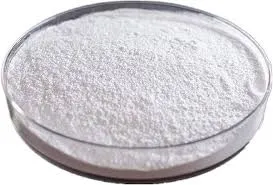
فېۋرال . 13, 2025 19:05 Back to list
RDP


Geographically, the Asia-Pacific region dominates the market, driven by rapid urbanization and infrastructure development in countries like China and India. Conversely, North America and Europe are also witnessing substantial growth due to advancements in green building technologies and stringent regulations promoting sustainable building practices. Credibility and Trust in Sustainable Practices In an era where environmental sustainability is non-negotiable, redispersible polymer powders are recognized for their eco-friendly properties. Manufacturers have begun to align their production processes with environmental standards like ISO 14001, ensuring minimal carbon footprint and reduced volatile organic compounds (VOCs). The adaptability of RPPs to sustainable practices increases trust among stakeholders—architects, builders, and consumers—who are increasingly mindful of environmental impact. The credibility of using RPPs is further bolstered by endorsements from reputable institutions and certifications that validate their performance and environmental safety. Such endorsements not only build trust but also guide consumers in making informed decisions about construction materials. Future Prospects and Innovation Looking ahead, the redispersible polymer powder market is set to benefit from ongoing innovations. Researchers are exploring novel formulations that incorporate nanotechnology to further enhance the mechanical properties of RPPs. There is also a growing interest in bio-based polymers that could potentially replace traditional synthetic components, contributing to even greater sustainability. Moreover, digital advancements like Building Information Modeling (BIM) are paving the way for more precise integration of RPPs in construction projects. This technology not only optimizes material usage but also enhances project planning and execution, ensuring the continued relevance and expansion of RPP applications in future architectural paradigms. In summary, the redispersible polymer powder market offers a testament to the confluence of innovation, practicality, and sustainability in modern construction practices. As this market continues to evolve, stakeholders must remain informed and adaptive to leverage the full potential of RPPs in building the infrastructure of tomorrow.
-
Unlocking the Benefits of HPMC Products: A Gateway to Versatile Applications
NewsAug.07,2025
-
Unleashing the Potential of HPMC Ashland: A Comprehensive Look
NewsAug.07,2025
-
Tile Bonding Cellulose: The Key to Superior Adhesion and Durability
NewsAug.07,2025
-
Hydroxypropyl Methylcellulose Powder: The Versatile Component in Modern Pharmaceuticals
NewsAug.07,2025
-
Hydroxyethyl Cellulose: The Versatile Solution for Various Industries
NewsAug.07,2025
-
Hydroxyethyl Cellulose (HEC): The Versatile Polymer for Various Applications
NewsAug.07,2025







